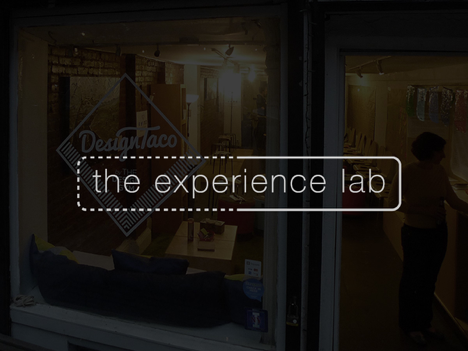IBM has one. Wendy’s has one. Deloitte also has one. Many organisations are developing their own versions but I really have my doubts if your organisation has one. I do not think your organisation even has plans of getting one. By one, I mean a laboratory. Yes, I mean that facility, room or space within the organisation that is solely dedicated to developing new and better ways of doing things under controlled conditions.
For many readers, the mention of a “laboratory’ conjures images of stern-looking scientists in long white coats, spotting unusually-large safety goggles, standing among strange-looking glass apparatuses and mixing different kinds of liquids. But that is necessarily not the kind of lab we are referring to. If the organisation in question happens to be into products that involve chemicals, then it is possible the Experience lab might look like the ones shown in the many crime-busting shows on TV. There might be lots of computers, storage devices and other gadgets though but the Experience Lab is a different kind of lab—one in which chemicals are not mixed to see if there is a colour change or if there would be a gaseous explosion.
The Experience Lab is one in which customer insights are carefully studied and the right solutions provided—with the sole aim of ensuring that the customer’s experience is always a pleasurable one. The Customer Experience Lab is about taking role play to a different new level. Customer service employees as part of a regular training regime should be made to have a feel of the Experience Lab to help them better walk in the shoes of their customers.
Where there is a lab, there are bound to be researchers. So who are the researchers who work in the Experience Labs? Employees of the organisation who might (or might not be) be scientists, contracted business consultants, service designers and, of course, occasionally customers. Depending on the objectives of the organisation for setting up the Experience Lab, it can be staffed with employees from different departments within the organisation or it can be staffed with new employees with the requisite skills. In the case of Wendy’s, their Experience Lab was opened near Ohio State University’s campus. The facility, which was purported to be an old restaurant, is meant to house 25 information technology and operations employees.
In the case of IBM, clients who approach the Experience Lab have access to more than one hundred researchers from all the world. These virtual co-workers will be able to bring their rich and varied experiences to bear on the challenge at hand.
Business consultants in the Lab can offer valuable insights from a very unique angle since they are mostly closer to the action than the scientists. In the Experience Lab, business consultants become the link between the scientists and customers. They are able to see things that the scientists do not see and are also able to see things that the average customer might not see.
It is very important that in anything that has to do with the customer, the customer is present. Having the customer taking part in the Experience Lab does not necessarily mean that the customer has to be physically present. In this day and age of advance technologies, a customer can easily be present in the Lab without being present.
Unlike the lab in my secondary school where the mice really have no say as to what kind of experiment should be carried, the Customer Experience Lab operates on the basis of co-creation. Organisations must ensure that customers’ inputs are crucial to whatever experiments are carried out in the Experience Lab.
Experiments use information to create more information. Scientists must first have information on which to prove or disprove what they set out to experiment. The more information scientists have on a particular subject, the better their ability to come out with more valid findings. This is why a census is always a better way to go than the use of a sample. In the Experience Lab, getting information is as easy as a click away.
We find ourselves in an age where customers have many more means by which to engage with businesses. In times past, if a customer needed to reach out to a business, the customer had to either visit in person, write a letter or make a call. That is all in the past. These days, a customer can deal with a business without getting out of bed. Right under the comfort of the bedsheets, a customer can engage with the business through mobile, social and cloud technologies.
With so many ways by which a customer can reach out to customers, it is easy for businesses to feel overwhelmed with the deluge of information. However, this is a great advantage and a valuable resource for businesses if they know how to handle the information customers are giving to them for free. The more customers reach out to businesses, they more they reveal about their likes, dislikes, aspirations, anxieties, etc. A business with an Experience Lab would be able to gather all this information and then use it to create an experience that will make that customer a customer for life. Using that information, a business can create what some have referred to as “a market segment of one”—a customised service for each and every customer.
Closely related to the concept of the Experience Lab is what customer experience guru Jeanne Bliss refers to as a Customer Room. I see a Customer Room as a set up within the organisation where employees can go to when they need to be reminded of the importance of the customer. The Customer Room is as close to a real customer experience as employees can get.

If the organisation is one that is involved in the manufacturing of a product, the Experience Lab is the place where customers can be brought in for them to have first-hand experience with the product and to discuss their honest opinions with the organisation. There is always an insight that customers can offer that even the most astute scientists or designers might not have thought of. Even if a customer does not offer any “valuable” advice, it is important to remember that the customer is the final authority on whatever is being designed. If the customer says the product or service is not good, no amount of marketing can help.
It is interesting to note that every single one of the organisations that has an Experience Lab happens to be among the very innovative in their industries. This is because it takes an organisation with an innovation-biased culture to embrace something as radical and revolutionary as a Customer Experience Lab. Open-mindedness is a very important characteristic of companies that are always on the lookout for how to better serve their clients.
It is important to state that the setting up of an Experience Lab does not necessarily mean that the quality of the customer’s experience is going to change overnight. It is one thing to have a treasure trove of valuable customer insights and it is a totally different thing to put those insights to good use. To set up an experience lab and refuse to make use of the information that comes out of it is a case of causing financial loss to the company.
A company should not just set up an Experience Lab because the competition is doing so or because some consultants advised so. If the organisation has its own way of ensuring that it is always finding innovative ways of engaging with its customers and ensuring that the experience of customers is always pleasurable, then such an organisation might not need an Experience Lab. If such a company sets up one, then it is really not because it is a need but because it is a want. It means that organisation wants to take its service experience quality to a different level.
At the risk of sounding like a broken record, especially for regularly readers of this column, I will once again state that businesses are facing competition like they have never before. Post-COVID-19, things might get even fiercer. The little things are going to make the differences. The organisations that will survive after this pandemic are going to be those that better understand their customers. The businesses that can get into the minds of their customers to know their fears and anxieties will be those that would be in the position to design the kind of experiences that would keep customers coming for more.
Experience is everything for a customer. It does not matter what the organisation says about itself or its offering. It does not matter if the product is the cheapest on the market, if customers do not enjoy the experience of using that product, that product will die out sooner than its manufacturers can ever imagine. It does not matter how well the service is designed. If a customer’s experience does not go well, that customer would walk away. To design those experiences, however, it might be helpful if the business has an Experience Lab, or something like that.









